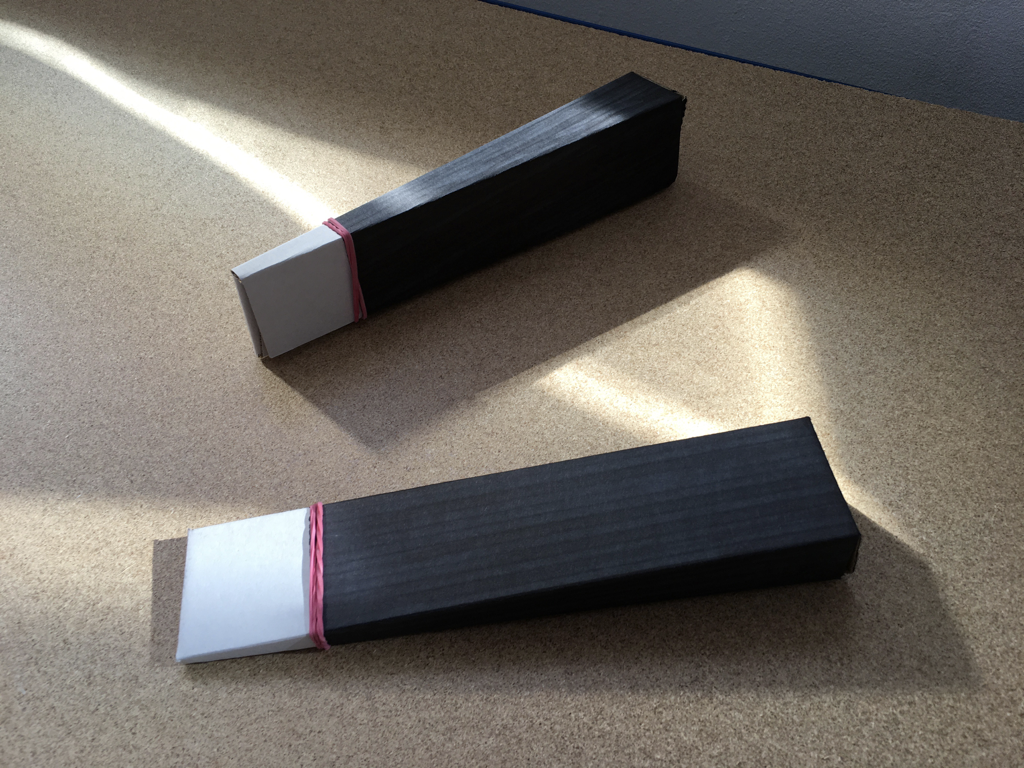| Table of Contents |
|---|
Potentielles Team
- Prof. Dr. Torsten Edeler
- Prof. Dr. Jan Mietzner
- Prof. Dr. Andreas Plaß (advisory)
- Prof. Ralf Hebecker
Aktuelles Ziel: Version 2
...
Hauptfragen
- Optisch oder elektrisch (oder akustisch)?
- Datenübertragung?
- Stromverbrauch?
- Was gibt's schon?
- Was gibt's schon auf dem Smartphone?
...
Suchbegriffe: scavenger hunt, treasure hunt, qr code reader, barcode reader, https://en.actionbound.com (Wiki-Seite: https://de.wikipedia.org/wiki/Actionbound), mobile adventures and interactive guides for smartphones and tablets, magic wand
https://en.wikipedia.org/wiki/MagiQuest
Lesestifte mit Audio-Ausgabe
...
- Modernes, elegantes Design 1, 2.
- Barcode DJs
Arduino RFID Reader/Writer
– Das ist basically, was wir auch gemacht haben (RC522 RFID Reader/Writer)
...
Noch mehr Papers
Interactive Storyrooms
Tools for children to create physical interactive storyrooms
https://dl.acm.org/doi/abs/10.1145/973801.973821
The magic wand
https://dl.acm.org/doi/abs/10.1145/984952.984972
Neue Begriffe
embedded technologies, physical interactive storyrooms, storytelling experiences, physical interactive storytelling environments
ABOWD, G. D. and MYNATT, E. D. 2000. Charting past, present and future research in ubiquitous computing. ACM Trans. Computer-Human Interaction 7, 1 (March 2000), 29/58. Special issue on HCI in the new Millenium. Google Scholar
ALBORNI, H., DRUIN, A., MONTEMAYOR, J., PLATNER, M., PORTEOUS, J., SHERMAN, L., BOLTMAN, A., TAXEN, G., BEST, J., HAMMER, J., KRUSKAL, A., LAL, A., PLAISANT-SCHWENN, T., SUMIDA, L., WAGNER, R., AND HENDLER, J. 2000. Designing StoryRooms: Interactive storytelling spaces for children. In Proceedings of the Conference on Designing Interactive Systems (DIS-2000). ACM Press, New York, 95- 104. Google Scholar
Version 1
Die Zeigestäbe (pro Team einer mit teamabhängiger Kennung) sind prototypisch selbst entwickelte Lesegeräte für Nahfeldsensoren mit WiFi-Verbindung zum zentralen Rechner. Sie können verwendet werden, um im Raum platzierte Nahfeldsensoren als gefunden zu markieren. So kann beispielsweise hinter eine Abbildung auf einem Plakat ein solcher Sensor angeklebt werden und kostengünstig eine Interaktion mit den gedruckten Informationen auf einer Papier- oder Stoffbahn realisiert werden.
...
